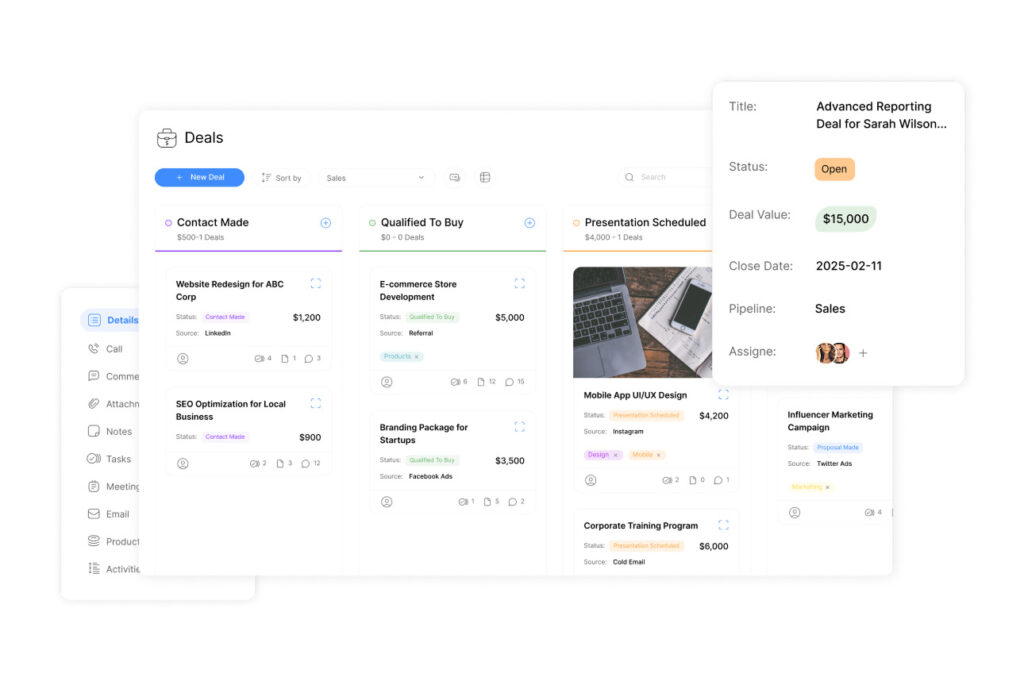Project Template: SaaS Product Development Roadmap Template

Two-thirds of European companies operate without a clear strategy for building digital solutions, according to recent industry data. This alarming gap leaves teams scrambling to prioritize features, meet deadlines, and deliver value—a challenge that costs businesses millions annually in wasted resources.
Structured planning separates thriving organizations from those stuck in reactive mode. A well-designed framework turns chaotic workflows into coordinated efforts, helping leaders align cross-functional teams and adapt to shifting market demands. For U.S. companies aiming to outpace competitors, strategic clarity isn’t optional—it’s essential.
The right approach bridges vision and execution. It converts abstract ideas into actionable steps while maintaining flexibility for user feedback and emerging trends. Teams gain visibility into timelines, stakeholders understand priorities, and decision-makers track measurable progress at every phase.
Key Takeaways
- 66% of organizations lack structured planning methods for digital initiatives
- Strategic frameworks prevent wasted resources and misaligned priorities
- Cross-functional alignment improves adaptability to market changes
- Clear timelines enable better progress tracking and stakeholder communication
- Flexible systems accommodate user feedback without derailing core objectives
Introduction to SaaS Roadmap and Its Importance
Market leaders attribute 40% of their operational efficiency to structured alignment tools. Complex digital initiatives demand coordinated execution across departments—a challenge when priorities shift weekly. Visual planning systems bridge this gap by converting abstract goals into sequenced actions.
Navigating Complex Build Cycles
Modern software creation involves balancing user needs, technical constraints, and market trends. Teams often struggle with competing demands without a central reference point. Structured frameworks solve this by:
- Mapping dependencies between features and resources
- Highlighting critical path milestones
- Providing real-time progress visibility
| Focus Area | Traditional Approach | Roadmap-Driven Method |
|---|---|---|
| Priority Setting | Reactive adjustments | Data-backed decision cycles |
| Team Alignment | Monthly sync meetings | Continuous visual updates |
| Adaptability | 6-month revision cycles | Biweekly priority reviews |
Building Consensus Through Clarity
Effective planning tools eliminate ambiguity about what matters most. When stakeholders see how daily tasks connect to quarterly objectives, collaboration improves. Decision-makers gain confidence to allocate budgets, while engineers understand how their work impacts business outcomes.
Key insight: Organizations using visual alignment systems report 28% faster conflict resolution during complex projects. Clear timelines prevent departments from working at cross-purposes, reducing redundant efforts by up to 19%.
The Importance of a Product Roadmap in SaaS Development

Companies lose 23% of annual productivity resolving misaligned priorities, according to a 2024 operations study. This gap persists when departments operate with conflicting understandings of objectives. A centralized planning system bridges this divide by translating organizational vision into coordinated actions.
Key Benefits for Teams and Stakeholders
Alignment frameworks eliminate confusion about priorities. When engineering, design, and marketing groups reference the same timeline, redundant efforts drop by 31%. Cross-functional visibility helps identify dependency conflicts before they delay launches.
Three critical advantages emerge:
- Faster decision-making: Leaders allocate resources confidently when timelines show how initiatives connect to quarterly targets
- Reduced friction: Marketing teams adjust campaigns based on actual engineering capacities instead of unrealistic expectations
- Stronger accountability: Executives track progress against measurable milestones rather than vague promises
Stakeholders gain clarity through real-time updates. Designers see how user feedback shapes upcoming sprints. Sales teams access launch dates to prepare client communications. This transparency builds trust across departments.
Organizations using visual alignment tools report 42% fewer inter-team conflicts. Shared timelines help diverse groups understand how their work contributes to shared objectives. The result? Faster iterations, smarter resource use, and consistent progress toward company-wide goals.
Understanding the Product Development Process
A recent survey shows that companies with structured approaches to product creation reduce time-to-market by 35%. This systematic method turns theoretical concepts into tangible solutions through coordinated phases. Teams that master these stages consistently outperform competitors in quality and speed.
From Concept to Launch
The journey begins with discovery—analyzing market gaps and user pain points. Planning follows, translating insights into actionable steps with defined success metrics. Each phase builds on previous work while allowing flexibility for emerging data.
Structured frameworks convert abstract ideas into executable plans. They integrate technical feasibility checks with business goals at every milestone. Cross-functional teams collaborate better when visualizing how design choices impact launch timelines.
Critical decision points act as quality gates. Teams assess progress, adjust priorities, and validate assumptions before advancing. One Fortune 500 company reduced rework by 41% using this approach—testing prototypes early and often.
Successful execution requires balancing three elements:
- User needs: Continuous feedback loops shape feature evolution
- Technical limits: Realistic assessments prevent overpromising
- Business impact: Clear ROI calculations guide resource allocation
Organizations thrive when they treat the development process as a living system. Regular reviews keep teams aligned as market conditions shift. The result? Solutions that solve real problems while driving sustainable growth.
Common Roadmap Challenges and Pitfalls

Even the most meticulously planned initiatives often derail when foundational issues remain unaddressed. Teams frequently encounter predictable obstacles that stem from rigid planning habits and misaligned priorities. These challenges erode trust in strategic frameworks and waste valuable resources.
Reasons Why Roadmaps Fail
Marty Cagan identifies core vulnerabilities in his book “Inspired: How to Create Tech Products Customers Love”: unvalidated assumptions, unrealistic timelines, and inflexible execution. Organizations often prioritize feature checklists over solving real user problems. This creates solutions that lack market relevance or technical feasibility.
“Weak teams cling to initial plans despite red flags, while strong ones treat roadmaps as evolving hypotheses.”
Three critical failure patterns emerge:
- Ignoring usability testing and customer feedback loops
- Overcommitting to deadlines without buffer for iterative improvements
- Treating stakeholder requests as mandates rather than inputs
Strategies to Overcome Challenges
Successful teams build adaptability into their planning processes. They establish clear evaluation criteria for pivoting when data contradicts initial assumptions. Regular discovery phases help validate concepts before allocating significant resources.
Proven tactics include:
- Conducting biweekly risk assessments with cross-functional leaders
- Reserving 20% of capacity for unplanned adjustments
- Mapping dependencies between technical constraints and business objectives
Organizations that implement these practices reduce rework by 38% and accelerate time-to-market by 29%. The key lies in balancing structure with responsiveness—creating living documents that guide rather than dictate progress.
Alternative Approaches to Building Product Roadmaps
Teams achieve 37% faster decision-making when adopting modern planning methods, according to a 2023 MIT study. Traditional feature-driven frameworks often fail to address evolving needs, prompting leaders to explore adaptive alternatives.
High-Integrity Commitment
This method requires rigorous validation before setting deadlines. Teams analyze technical constraints, create prototypes, and conduct feasibility tests. By addressing risks early, organizations reduce late-stage surprises by 44%.
Three principles define success:
- Problem-first thinking: Map solutions to verified user pain points
- Evidence-based timelines: Use prototyping data to set realistic expectations
- Stakeholder transparency: Share testing outcomes to align priorities
Outcome-Focused Strategies
Forward-thinking teams prioritize measurable business impact over feature checklists. A telecom company increased client retention by 19% using this approach—solving billing disputes faster instead of adding unnecessary app functions.
Key practices include:
- Linking every initiative to revenue growth or cost reduction
- Using agile planning frameworks for rapid adjustments
- Reviewing metrics biweekly to confirm strategic alignment
Data-driven teams outperform competitors by validating assumptions at every phase. They treat roadmaps as evolving guides rather than fixed contracts, ensuring resources target high-impact opportunities.
Incorporating Business Goals and Product Vision
Nearly half of tech companies report misalignment between their strategic goals and product vision, according to Gartner research. This disconnect leads to wasted resources and disjointed efforts. Effective organizations bridge this gap by treating their vision as a compass that directs every tactical decision.
Aligning Strategic Business Objectives
Clear business goals act as guardrails for product initiatives. Teams achieve better focus when they:
- Translate quarterly revenue targets into feature prioritization criteria
- Map technical capabilities to market differentiation opportunities
- Establish success metrics that reflect both user value and financial impact
One Fortune 500 firm reduced redundant projects by 34% after implementing cross-departmental alignment workshops. Their leadership now reviews goal progress biweekly using shared dashboards.
Defining and Communicating Product Vision
A compelling vision statement answers critical questions: What problem do we solve? Who benefits most? How do we measure lasting impact? Product strategist Melissa Perri emphasizes:
“Vision without actionable strategy becomes corporate wallpaper. Teams need concrete milestones that show how daily work builds toward the north star.”
Effective communication methods include visual roadmaps showing how features connect to long-term objectives. Regular town halls help reinforce how individual contributions advance shared goals. Organizations using these practices see 27% faster decision-making during pivots.
Effective Tools for Roadmap Creation and Management

Selecting the right alignment platform separates reactive teams from strategic innovators. Modern organizations need systems that translate complex priorities into visual workflows while accommodating rapid adjustments. The choice between basic spreadsheets and specialized software often determines how effectively groups execute their plans.
Spreadsheet and Software Options
Free spreadsheet applications remain popular for their accessibility but struggle with dynamic updates. Teams using these solutions spend 18% more time manually adjusting timelines compared to dedicated platforms. Specialized tools address this gap through:
- Automated synchronization with task trackers like Jira and Trello
- Interactive timelines that adjust to priority shifts
- Role-based views for executives vs. technical staff
Roadmunk stands out with dual display modes—timeline and swimlane—catering to different stakeholder needs. ProductPlan simplifies cross-department coordination through real-time updates visible across marketing, engineering, and support teams. Atlassian’s built-in roadmap tool benefits existing Jira users but requires technical proficiency to unlock advanced features.
Using a Tool Comparison Matrix
Leaders should evaluate options against six critical factors:
- Integration capabilities with current systems
- Budget constraints versus long-term ROI
- Learning curve for non-technical members
Hygger’s free tier offers surprising depth for startups, while Aha! suits enterprises needing granular control. As one tech director notes: “Our comparison matrix revealed hidden costs in ‘cheap’ solutions—implementation time matters as much as licensing fees.”
Teams achieve optimal results by testing 2-3 shortlisted platforms through trial periods. The right choice becomes evident when daily standups shift from debating priorities to executing clear next steps.
Real-Life Roadmap Examples in SaaS
Leading organizations use tangible examples to transform abstract strategies into executable plans. These models demonstrate how structured frameworks align daily tasks with long-term objectives while maintaining adaptability.
Prioritization Through Time Horizons
The now-next-later approach divides efforts into three clear phases. Immediate tasks focus on urgent improvements, while future columns address strategic bets. A fintech company used this method to reduce feature backlogs by 47%—shipping critical updates faster without losing sight of multi-quarter initiatives.
Key benefits include:
- Visual clarity for cross-department coordination
- Flexible resource shifts between timeframes
- Transparent trade-off discussions during planning
Balancing Functionality With Strategy
Feature-based models excel at tracking technical progress. Teams map specific capabilities to release dates, helping stakeholders anticipate deliverables. However, goal-based frameworks answer why each item matters—connecting tasks to revenue growth or customer retention targets.
| Model | Strengths | Best For |
|---|---|---|
| Feature-Driven | Detailed progress tracking | Engineering-focused teams |
| Goal-Oriented | Strategic alignment | Leadership communication |
One productivity platform combines both approaches. Their public roadmap highlights upcoming features while linking each to broader business outcomes. This dual perspective helps customers understand value while keeping internal teams focused on measurable impact.
Successful examples prove that format choice depends on audience needs. Technical teams thrive with granular feature timelines. Executives prefer high-level goal maps. Adaptive organizations often blend multiple models to serve different stakeholders effectively.
Key Elements of a Successful Product Roadmap

Effective planning systems transform strategic goals into tangible results through structured layers. These components bridge boardroom priorities with frontline execution, ensuring every effort aligns with measurable outcomes.
Themes, Epics, and User Stories
Themes act as strategic anchors, defining the core challenges teams aim to solve. A financial tech company might prioritize “payment security improvements” as a quarterly theme. These high-level directives guide resource allocation across departments.
Epics organize complex initiatives into achievable phases. Consider a logistics platform upgrading its tracking system—this epic might span multiple sprints but stays connected to broader efficiency goals. Teams maintain focus while managing technical dependencies.
User stories convert abstract concepts into specific actions. Instead of “improve load times,” a story might state: “Reduce dashboard data refresh to under 2 seconds for premium users.” This clarity helps developers estimate effort and prioritize tasks.
“Hierarchical planning prevents teams from drowning in details while losing sight of the big picture.”
Swimlanes visually separate workflows without breaking connections between strategy and execution. Marketing campaigns might occupy one lane while engineering updates run parallel—both linking to shared revenue targets. This structure helps leaders spot bottlenecks during cross-functional reviews.
Successful frameworks balance adaptability with direction. They show how daily code commits contribute to annual growth metrics. When teams understand these relationships, decision-making becomes faster and more aligned with business needs.
Creating a SaaS Product Development Roadmap Template
Strategic planning separates market leaders from companies stuck in constant catch-up mode. Teams thrive when they translate vision into sequenced actions, balancing immediate needs with long-term goals. This approach turns abstract ideas into measurable outcomes while maintaining flexibility for evolving priorities.
Blueprint for Execution
Effective frameworks start by mapping core objectives to specific deliverables. Cross-functional workshops identify dependencies between technical requirements and business targets. Teams then break initiatives into phases, ensuring each step delivers tangible value.
Balancing Speed and Impact
Prioritization requires analyzing which features drive user retention versus those offering marginal gains. Data-driven scoring systems help leaders allocate resources to high-impact areas first. Time buffers built into timelines allow for adjustments without derailing critical paths.
Successful organizations treat their plans as living systems. Regular reviews incorporate feedback from stakeholders and performance metrics. This adaptive mindset ensures teams deliver solutions that resonate with users while advancing company-wide growth objectives.

